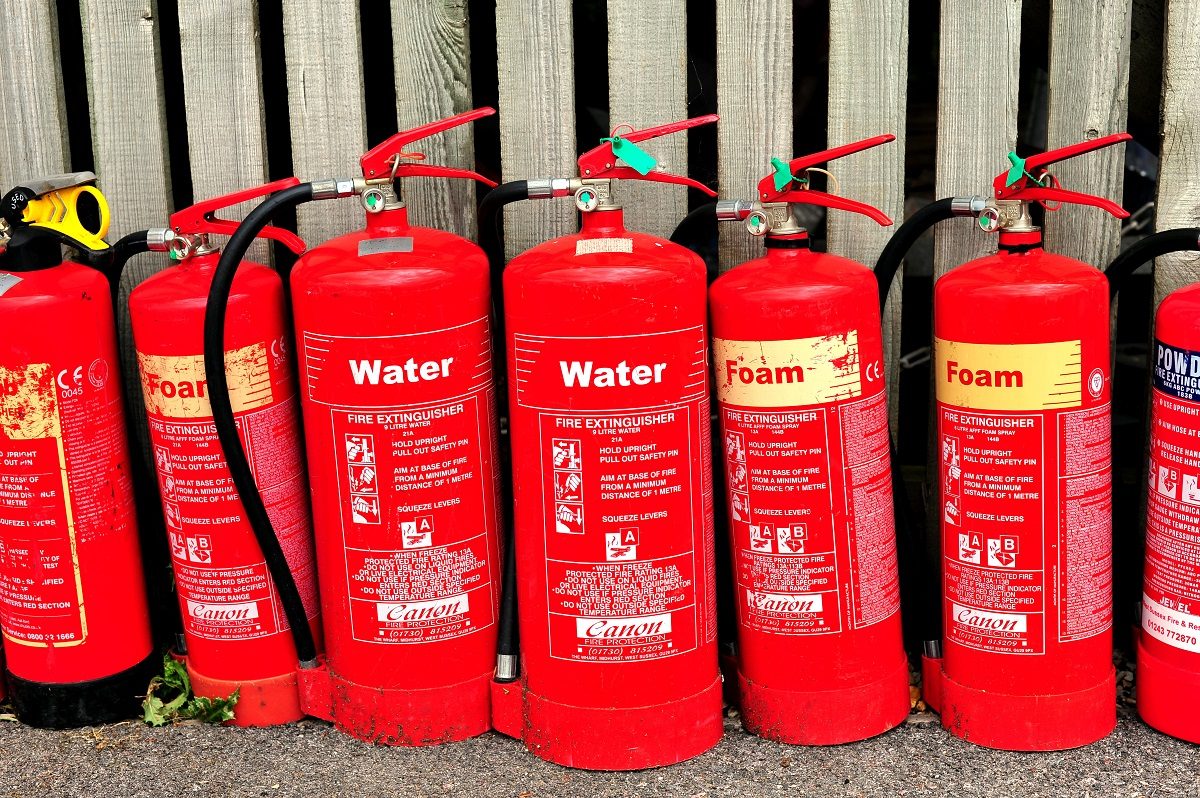If you’re a business owner, it’s important to get the right fire extinguisher for your business because most people don’t realize the dangers of using the wrong type. However, selecting the right fire extinguisher may not be as straightforward as you may think.
Here is a brief guide that can help you understand the different types, so you can buy the right fire extinguisher for your workplace. Regular fire extinguisher testing is required once you have the right extinguishers to ensure they work correctly if a fire does break out.
There are six common types of fire extinguishers:
- Water Fire Extinguisher – Used mainly for wood, paper, and plastic fires
- Wet Chemical Fire Extinguisher – Used mainly for fires from cooking oil and fats
- Foam Fire Extinguisher – Used mainly for flammable and combustible liquid fires
- Powder ABC Fire Extinguisher – Commonly used as a multipurpose fire extinguisher. Works on fires with wood, paper and plastic as well as flammable liquids and electrical fires.
- CO2 Fire Extinguisher – Used mainly to extinguish the fire from energized electrical equipment
- Class D Metal Fire Extinguisher – Used mainly on metals
Water Fire Extinguisher
This plain red fire extinguisher is used to treat Class A fires. It’s mostly used at schools and most businesses that have some quantity of plastic, rubber, paper, and timber stored inside the building premises. Remember, you should never use it to extinguish fire caused by chemicals, cooking oil, and electrical equipment.
Wet Chemical Fire Extinguisher
This type is mainly used in commercial kitchens and restaurants. Besides extinguishing fires caused by plastic and paper, it is extremely effective against fires from cooking oil as well as flames ignited by fats. The wet chemical acts to seal the surface with a soapy substance, which prevents the fire from spreading. If you own a Cafe, you may also use a small 2-litre fire extinguisher. Don’t use it to douse a fire caused by an electrical appliance.
Foam Fire Extinguisher
The foam extinguisher is easily recognized by a blue strip across the top of the cylinder. Apart from its use on wood, paper, and plastic, it’s specifically formulated to work on flammable and combustible liquids. You will need it if you’re an owner of a petrol pump. The foam fire extinguisher works by forming a thick foam layer on top of the burning substance. Use it on Class B fires such as flammable liquid fires, petrol, diesel, and oil.
Powder ABE Fire Extinguisher
It is perhaps the most common type of fire extinguisher. Distinguished by a white stripe around the outer surface, the dry powder fire extinguisher is quite effective against Class A, B, C, and E fires. In simple words, it means you can use it to extinguish fires from flammable liquids, electrical equipment, and flammable gas. The dry powder is equally practical to combat fires from wood, paper, and plastic.
CO2 Fire Extinguisher
The type of fire extinguisher is mainly used to control fires from energized electrical equipment. To some extent, it can also control Class A and Class B fires. You can use it in switchboard rooms, server/data rooms, electrical machinery, and computer offices. Luckily, it doesn’t cause damage to computers or electrical equipment when used. Despite these benefits, CO2 fire extinguishers are generally not suited to outdoor use.
Class D Metal Fire Extinguisher
Used in laboratories and industrial applications, this special type of fire extinguisher is effective against metal fires involving magnesium, sodium, potassium, uranium, and other rare metals. The extinguishing medium does not react with metal.
Irrespective of the type of workplace, you may use more than one type of fire extinguisher to safeguard your premises. Just make sure to train employees on their proper use and inspect each fire extinguisher regularly. Proper use of correctly functioning and maintained fire extinguishers can save lives and prevent devastating damage.
